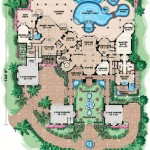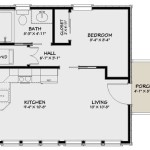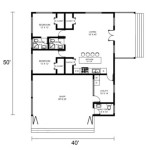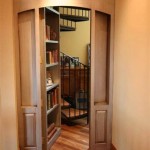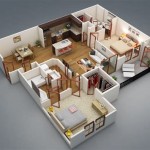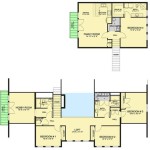Tiny House Plans On Wheels: A Comprehensive Guide
The burgeoning tiny house movement has captured the imagination of individuals seeking simplified living, financial freedom, and increased mobility. A prominent subset of this movement focuses on tiny houses on wheels (THOWs), offering the unique advantage of portability. Consequently, understanding the nuances of tiny house plans on wheels is crucial for those considering this lifestyle.
This article aims to provide a comprehensive guide to tiny house plans on wheels. It will explore various aspects, including design considerations, structural necessities, legal requirements, and accessibility features. This information is intended to equip prospective tiny house builders with the knowledge to navigate the complexities of planning and constructing a safe, legally compliant, and personally tailored tiny home on wheels.
Design Considerations for THOW Plans
Designing a tiny house on wheels involves a different set of considerations than designing a conventional house. Space optimization is paramount, demanding innovative solutions for storage, living, and utility functions. Every square inch must be carefully planned to maximize usability and comfort.
The layout of the tiny house should prioritize efficient workflow and minimize cramped conditions. Multi-functional furniture, such as convertible beds and folding tables, is often incorporated to save space. Vertical space is also strategically utilized with loft areas for sleeping or storage.
Natural light is another crucial element to consider. Large windows not only brighten the interior but also create a sense of spaciousness. Strategically placed windows can also provide cross-ventilation, reducing the reliance on air conditioning. However, window placement must also consider privacy and insulation to maintain energy efficiency.
Floor plans for tiny houses on wheels often incorporate a distinct separation of living spaces, despite the limited square footage. The kitchen typically includes compact appliances such as a small refrigerator, a two-burner cooktop, and a combined sink and countertop. The bathroom often features a composting toilet or a low-flush toilet with a small shower stall or a wet bath arrangement where the entire room is designed to get wet.
Furthermore, design should also reflect the owner's lifestyle and needs. A writer may prioritize a dedicated workspace, while an artist might require ample natural light and storage for art supplies. The interior design should be both functional and aesthetically pleasing, creating a comfortable and inspiring living environment.
Structural and Safety Requirements
Tiny houses on wheels must adhere to stringent structural and safety requirements to ensure they are both durable and roadworthy. The trailer itself forms the foundation of the structure and must be properly sized to support the weight of the house. Trailers specifically designed for tiny houses are typically preferred, as they have reinforced frames and axles capable of handling the load.
The framing of the house should be robust enough to withstand the stresses of transportation and adverse weather conditions. Lumber, steel, or a combination of both are commonly used. Careful attention must be paid to the connections between the framing members to ensure they are strong and secure. Hurricane ties and other specialized connectors are often employed to reinforce critical joints.
Proper insulation is essential for energy efficiency and climate control. Various insulation materials, such as spray foam, fiberglass, and mineral wool, can be used. The choice of insulation depends on factors such as R-value, cost, and ease of installation. Adequate ventilation is also important to prevent moisture buildup and maintain air quality.
Electrical and plumbing systems must be installed in compliance with relevant codes and regulations. Electrical wiring should be properly sized and grounded, and all connections should be secure. Plumbing systems should be designed to prevent leaks and ensure proper drainage. Water tanks and pumps may be required for off-grid living.
Safety features, such as smoke detectors, carbon monoxide detectors, and fire extinguishers, are essential. Emergency exits should be clearly marked and easily accessible. Securing all loose items during transportation is crucial to prevent them from shifting and causing damage or injury.
Legal and Regulatory Considerations
Navigating the legal and regulatory landscape surrounding tiny houses on wheels can be challenging due to the lack of uniform codes and standards across different jurisdictions. Understanding the specific regulations in the intended location is crucial before embarking on the construction process.
Tiny houses on wheels are often classified as recreational vehicles (RVs), park model RVs, or personal property, depending on the local laws. Each classification has different implications for building codes, zoning regulations, and property taxes. It is important to research the applicable regulations in the specific location where the tiny house will be parked or reside.
Some jurisdictions may have minimum size requirements for dwellings, which could restrict the placement of tiny houses on certain properties. Zoning regulations may also prohibit or limit the use of tiny houses as permanent residences in certain areas. It is essential to consult with local planning and zoning officials to determine the permissible uses of tiny houses.
Building codes, such as the International Residential Code (IRC), may apply to tiny houses, even if they are classified as RVs. Adhering to these codes can ensure the safety and structural integrity of the house. However, some jurisdictions may have alternative construction standards specifically for tiny houses.
Financing options for tiny houses on wheels can be limited compared to traditional mortgages. Personal loans, RV loans, or unsecured loans are often used to finance the construction or purchase of a tiny house. It is important to explore different financing options and compare interest rates and terms.
Insurance coverage for tiny houses on wheels may also differ from traditional homeowners insurance. RV insurance or personal property insurance may be required, depending on the classification of the house and the intended use. It is important to consult with an insurance agent to determine the appropriate coverage for the specific circumstances.
Accessibility Features in THOW Plans
While often overlooked, incorporating accessibility features into tiny house plans on wheels is paramount for creating inclusive and welcoming spaces. Designing for accessibility benefits not only individuals with disabilities but also older adults and those with temporary mobility limitations. Universal design principles, which aim to create spaces usable by all people, to the greatest extent possible, should be prioritized.
One of the primary challenges in tiny house design is navigating the limited space while ensuring adequate maneuvering room for wheelchairs or other mobility aids. Wider doorways and hallways are essential. A minimum doorway width of 32 inches is typically recommended for wheelchair access. Similarly, hallways should be at least 36 inches wide to allow for comfortable passage.
Ramps provide an alternative to stairs for entering and exiting the tiny house. Ramps should have a gentle slope, typically no more than a 1:12 ratio (one inch of rise for every twelve inches of run), to make them easier to navigate. Handrails should be installed on both sides of the ramp for added safety and support.
Inside the tiny house, clear floor space is crucial for maneuvering. Turning radii should be large enough to accommodate wheelchairs. Consider providing a minimum turning space of 60 inches in diameter. Furniture should be arranged to allow for easy movement and avoid creating obstacles.
Kitchen and bathroom features should also be designed with accessibility in mind. Adjustable-height countertops and sinks can accommodate users of different heights. Roll-under sinks provide knee space for wheelchair users. Grab bars should be installed in the bathroom to provide support while using the toilet or shower. Consider a roll-in shower with a handheld showerhead for easy access.
Controls and switches should be located within easy reach and operable with one hand. Rocker switches or touch controls may be easier to use than traditional toggle switches. Consider using smart home technology to control lighting, temperature, and other functions remotely.
Incorporating accessibility features into tiny house plans on wheels requires careful planning and attention to detail. However, the benefits of creating an inclusive and accessible space are well worth the effort. By prioritizing universal design principles, tiny house builders can create homes that are comfortable and functional for people of all abilities.

224 Sq Ft Tiny House On Wheels By Living Homes Small Diy

Design A Tiny House On Wheels Tips And Tools For Diyers

Tiny House Floor Plans 32 Home On Wheels Design

Escape Traveler A Tiny House On Wheels That Comfortably Sleeps 6 Floor Plans Trailer

Tiny House Plans The Project

Free Tumbleweed Diy Tiny House Plans Houses

27 Adorable Free Tiny House Floor Plans Craft Mart

How To Pick The Best Tiny House On Wheels Floor Plan Wayward Home

Floor Plans For Your Tiny House On Wheels Photos
:max_bytes(150000):strip_icc()/ana-tiny-house-58f8eb933df78ca1597b7980.jpg?strip=all)
4 Free Diy Plans For Building A Tiny House

